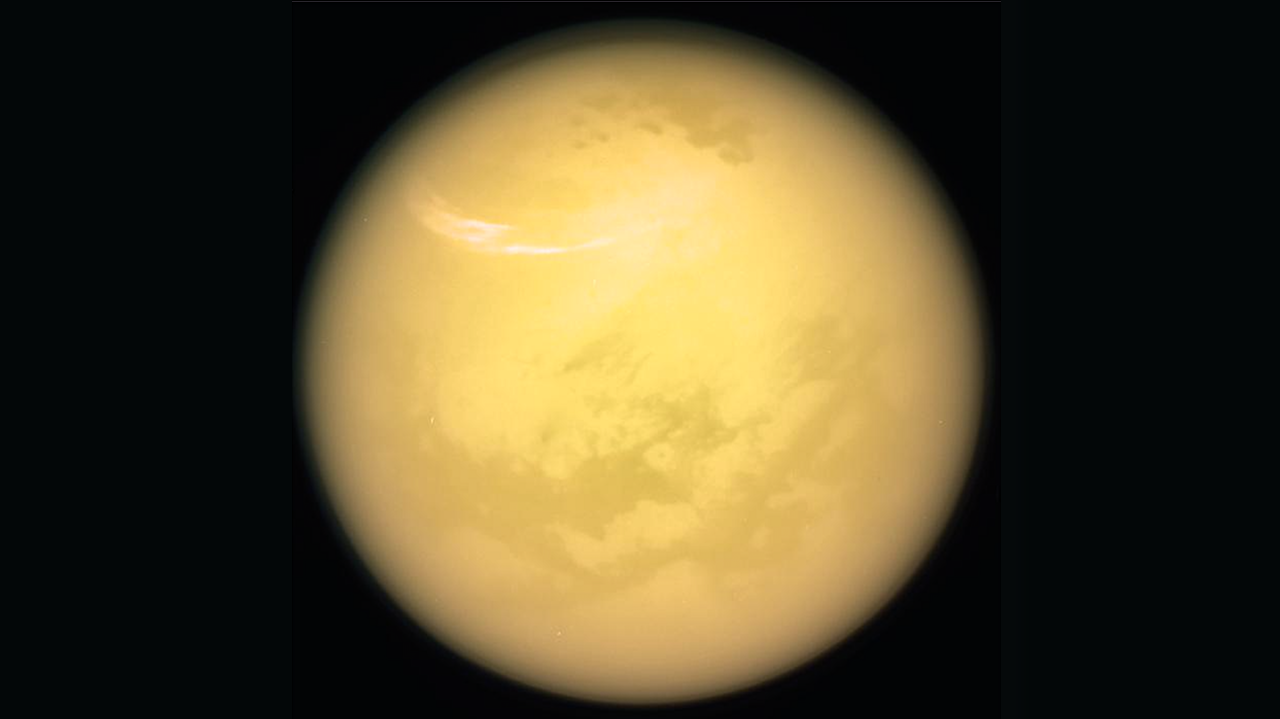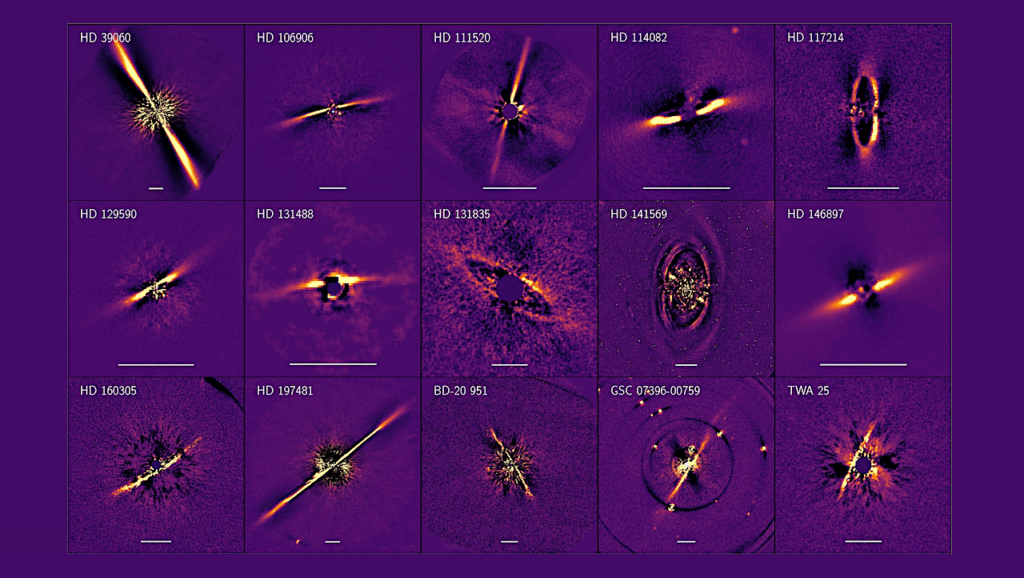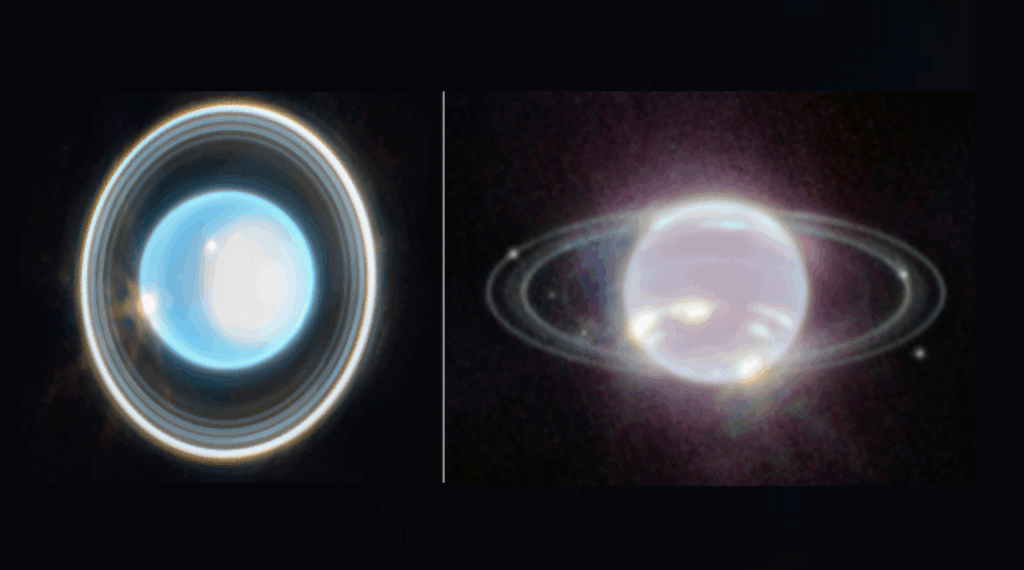Titan Has An Insulating Methane-rich Crust Up To Six Miles Thick

Saturn’s largest moon Titan is the only place other than Earth known to have an atmosphere and liquids in the form of rivers, lakes and seas on its surface. Because of its extremely cold temperature, the liquids on Titan are made of hydrocarbons like methane and ethane, and the surface is made of solid water ice.
A new study, led by planetary scientists at the University of Hawai‘i at Mānoa, revealed that methane gas may also be trapped within the ice, forming a distinct crust up to six miles thick, which warms the underlying ice shell and may also explain Titan’s methane-rich atmosphere.
The research team, led by research associate Lauren Schurmeier, that also includes Gwendolyn Brouwer, doctoral candidate, and Sarah Fagents, associate director and researcher, in the Hawai‘i Institute of Geophysics and Planetology (HIGP) in the UH Mānoa School of Ocean and Earth Science and Technology (SOEST), observed in NASA data that Titan’s impact craters are hundreds of meters shallower than expected and only 90 craters have been identified on this moon.
“This was very surprising because, based on other moons, we expect to see many more impact craters on the surface and craters that are much deeper than what we observe on Titan,” said Schurmeier. “We realized something unique to Titan must be making them become shallower and disappear relatively quickly.”
To investigate what might be beneath this mystery, the researchers tested in a computer model how the topography of Titan might relax or rebound after an impact if the ice shell was covered with a layer of insulating methane clathrate ice, a kind of solid water ice with methane gas trapped within the crystal structure. Since the initial shape of Titan’s craters is unknown, the researchers modeled and compared two plausible initial depths, based on fresh-looking craters of similar size on a similar-size icy moon, Ganymede.
“Using this modeling approach, we were able to constrain the methane clathrate crust thickness to five to ten kilometers [about three to six miles] because simulations using that thickness produced crater depths that best matched the observed craters,” said Schurmeier. “The methane clathrate crust warms Titan’s interior and causes surprisingly rapid topographic relaxation, which results in crater shallowing at a rate that is close to that of fast-moving warm glaciers on Earth.”

Cassini SAR (synthetic aperture radar) images of Titan’s impact craters. Arrows indicate potential forms of crater modification processes, including: dunes and sands (purple), channels (blue), and significant crater rim erosion (pink). Credit NASA/ Cassini
Methane-rich atmosphere
Estimating the thickness of the methane ice shell is important because it may explain the origin of Titan’s methane-rich atmosphere and helps researchers understand Titan’s carbon cycle, liquid methane-based “hydrological cycle,” and changing climate.
“Titan is a natural laboratory to study how the greenhouse gas methane warms and cycles through the atmosphere,” said Schurmeier. “Earth’s methane clathrate hydrates, found in the permafrost of Siberia and below the arctic seafloor, are currently destabilizing and releasing methane. So, lessons from Titan can provide important insights into processes happening on Earth.”

Proposed diagram of Titan’s interior (not to scale), showing a methane clathrate crust over a convecting ice shell. Credit Schurmeier, et al., 2024
Structure of Titan
The topography seen on Titan makes sense in light of these new findings. And constraining the thickness of the methane clathrate ice crust indicates that Titan’s interior is likely warm–not cold, rigid, and inactive as previously thought.
“Methane clathrate is stronger and more insulating than regular water ice,” said Schurmeier. “A clathrate crust insulates Titan’s interior, makes the water ice shell very warm and ductile, and implies that Titan’s ice shell is or was slowly convecting.”
“If life exists in Titan’s ocean under the thick ice shell, any signs of life (biomarkers) would need to be transported up Titan’s ice shell to where we could more easily access or view them with future missions,” Schurmeier added. “This is more likely to occur if Titan’s ice shell is warm and convecting.”
With the NASA Dragonfly mission to Titan scheduled to launch in July 2028 and arrive in 2034, researchers will have an opportunity to make up-close observations of this moon and further investigate the icy surface, including a crater named Selk.
Rapid Impact Crater Relaxation Caused by an Insulating Methane Clathrate Crust on Titan, The Planetary Science Journal (open access)
Astrobiology








